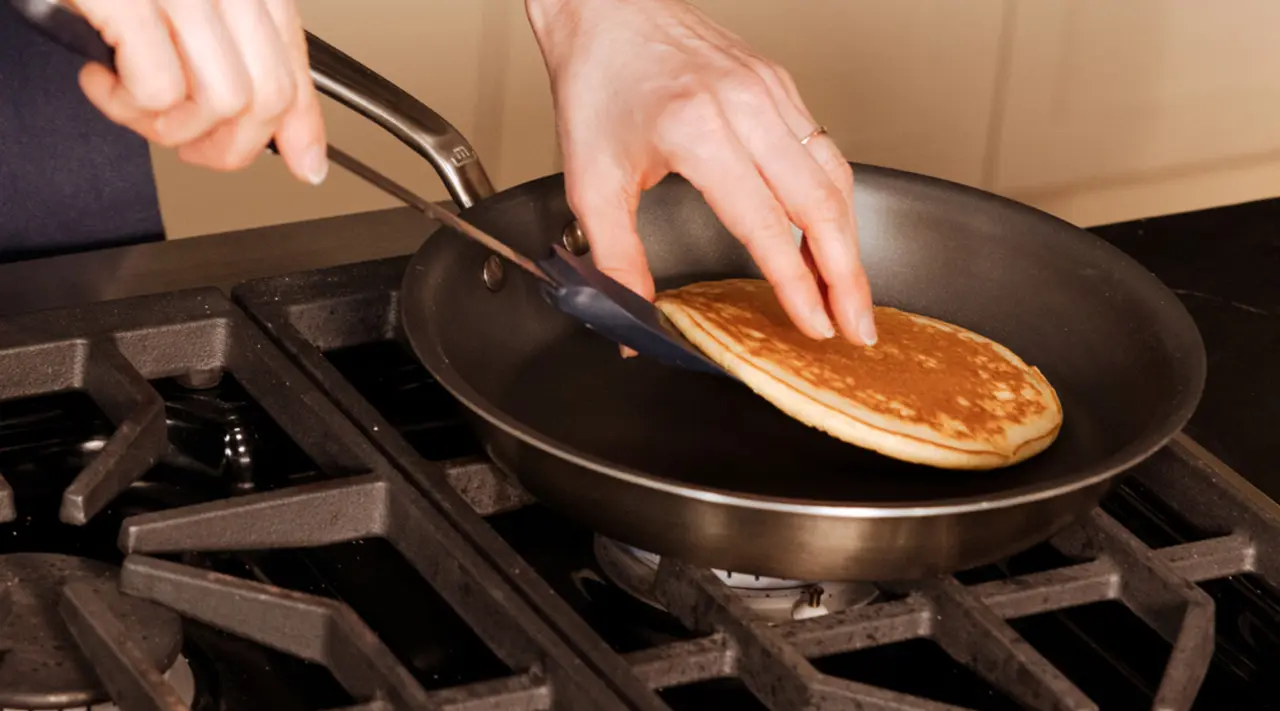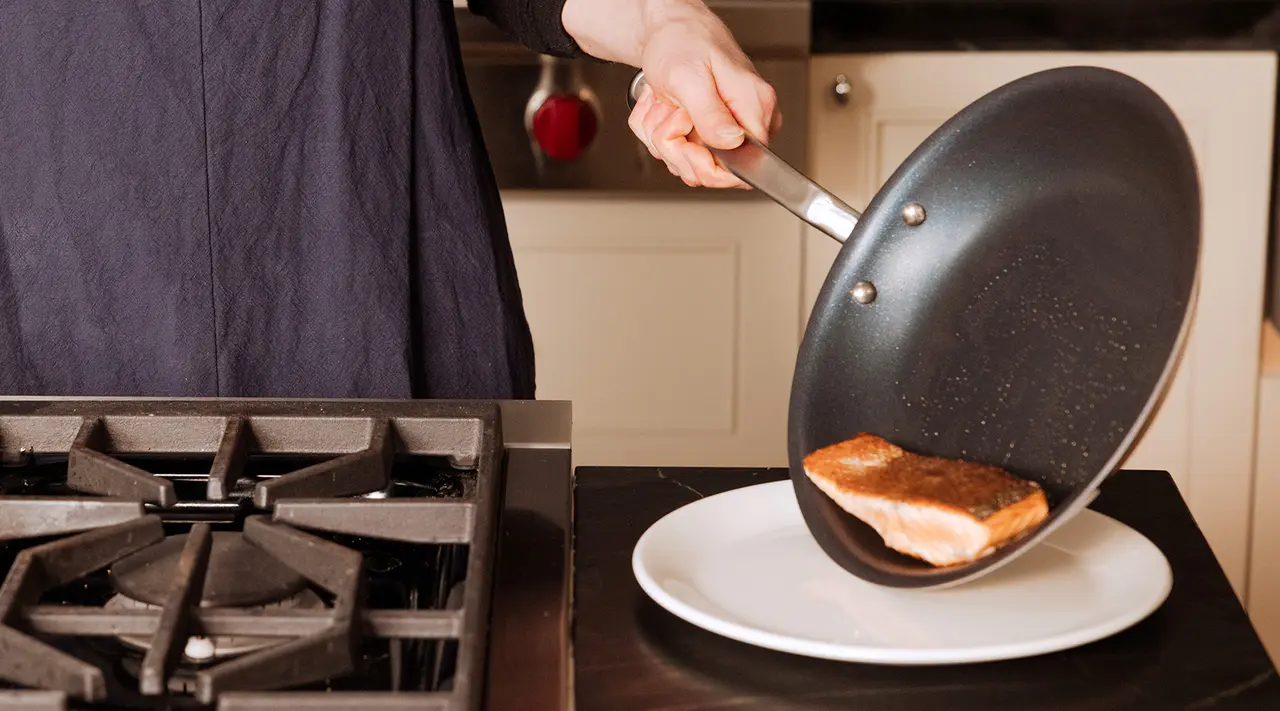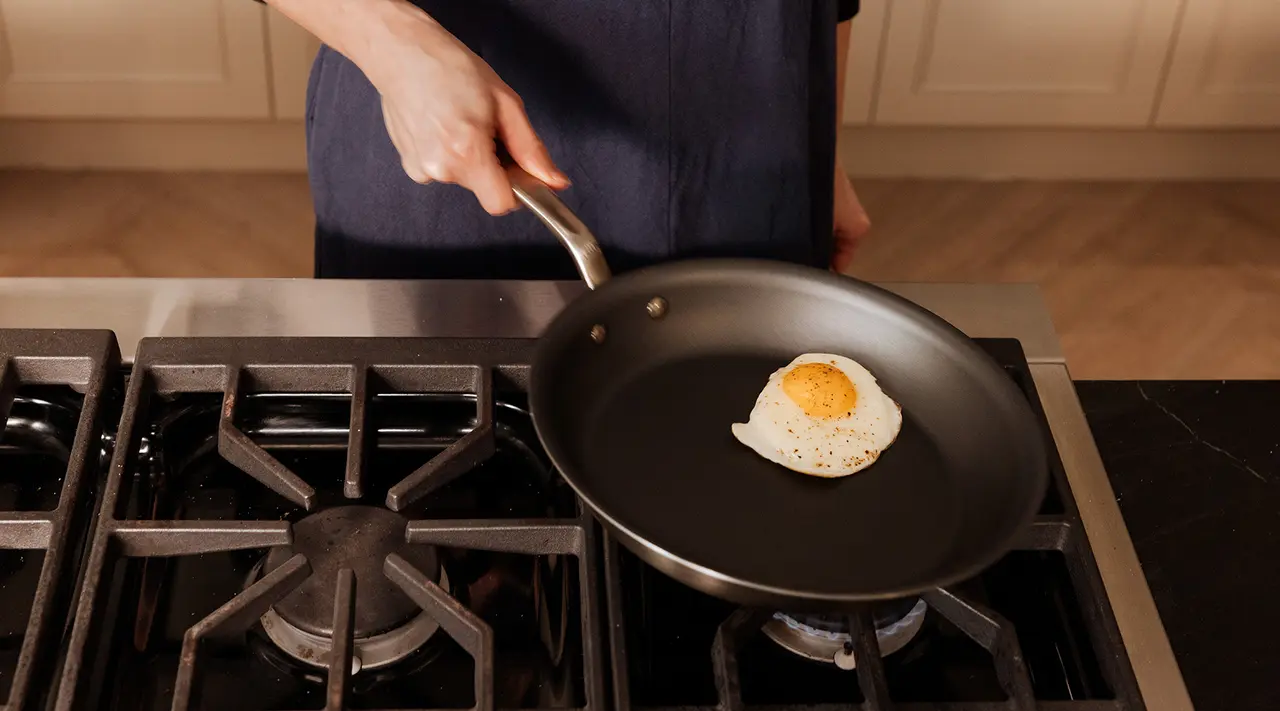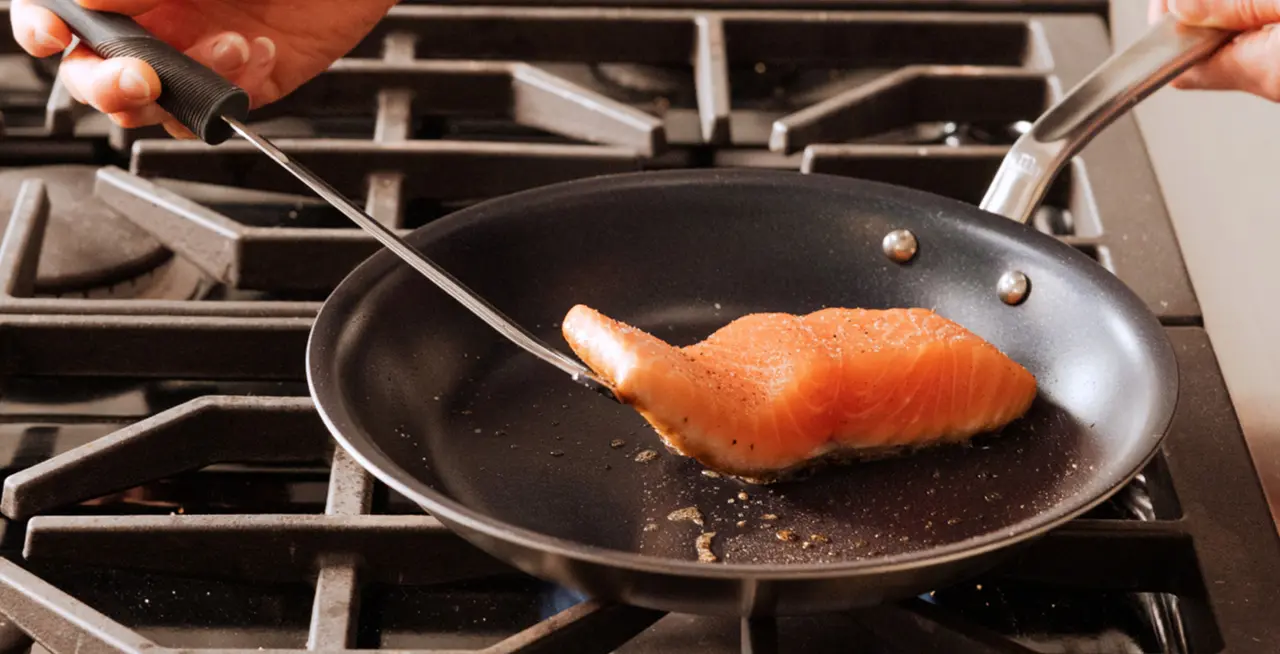The easy-to-clean surface of a non stick frying pan is nearly unrivaled—at least not when it comes to making scrambled eggs at 10 pm on a weeknight. But that surface won’t stay completely non stick forever.
You may encounter some bouts of sticking throughout your non stick’s life, and especially towards the end of it. In some cases, it’s easily fixed, while in others you’ll need a brand new pan. To figure out which camp you fall in, you first need to determine why your pan is sticking, and then determine if there’s anything you can do about it.
Reasons Your Non Stick Pan May Be Sticking

The reality of any coated pan, including non stick, is that they'll eventually wear out. While a high-quality non stick pan will last longer than a cheaper one (whose coating will typically wear out a year or so from purchase), these are not pans that you’ll pass down for generations. If you’re looking for a pan with non stick qualities that you can use for decades, we recommend cast iron or carbon steel.
That said, if you’ve had your pan for only a short while and it’s not as non stick as it once was, here are some of the most common causes of malfunctioning non stick.
Scratches
The coating of a non stick pan is easy to scratch even with the gentlest scrape of a sharp-edged metal spoon or spatula. These scratches can expose the metal underneath, harbor harmful bacteria, cause your food to stick, or potentially result in the coating flaking off into your food (not to mention underlie the importance of using non stick-friendly utensils).
A superficial scratch or two in the coating won’t dramatically affect your pan’s performance—and if you share a kitchen with roommates, it’s basically inevitable (speaking from experience). But if the surface of the pan is covered with scratches, especially ones that expose the metal underneath the coating, it may be time to swap it out.
Stuck-On Residue
Perhaps the simplest reason that some non stick pans start to stick, especially if the pan isn't very old, is that there’s a layer of stuck-on food residue getting in the way. Even the thinnest layer of dried egg white or residual starch from stir-frying potstickers can cause food to stick. A simple rinse and scrub should get your pan back to good as new.
Note that if you’re regularly scrubbing stuck-on food residue out of your pan, that probably means the non stick coating has begun to wear down—plus, aggressive scrubbing can do further damage to the coating.
Burnt-On Food
There’s stuck-on food residue, and then there’s burnt, blackened messes that seem permanently affixed to the bottom of your pan. This can happen if you leave food or oil in an unattended pan with the burner on, or if you cook with it on high heat. A layer of burnt-on oil or food gets in between the coating and whatever food you’re cooking, effectively rendering that coating ineffective. While it’s better to prevent burnt messes than it is to remove them, you can usually get rid of them with a bit of extra elbow grease.
We always recommend using medium or low heat when cooking with non stick, both to prevent burning and to keep the coating from breaking down. If you’re using a high-quality non stick pan like our ProCoat Collection with a stainless steel base that offers stellar heat retention and even heating, you won’t have to crank the heat to get a good sear on your food. Ours is oven-safe to 500F, but should rarely need to be used that high.
Degraded Coating
While it’s easy to see if the surface of your pan is scratched, there are other, less visible forms of damage that can affect your non stick cookware. If you frequently use your pan on high heat or in the oven, put it in the dishwasher, or use certain types of spray-on oils (these can bond permanently to the surface of the pan and effectively ruin the pan’s non stick ability), the coating can start to break down.
If you find yourself constantly scraping food out of your pan even when using plenty of oil, that’s a clear sign that the non stick coating is starting to wear down. Another sign is if the surface of your pan is starting to show discoloration that won’t come off with washing.
Old Age
Geriatric non stick is easily identified by discolored coating, worn-out non stick properties, and occasionally compromised coating (i.e., scratches and other wear and tear sustained during its use in the kitchen). If that sounds like you, it’s likely time to buy a new pan.
How to Restore Non Stick Coating

While there’s not much you can do for a non stick pan that’s warped, cracked, chipped, or severely scratched, there are a couple of ways you can salvage a gently used pan in need of a refresh. While a quick scrub with warm, soapy water and a sponge should be sufficient for small messes, you might need to up the ante for more extensive ones—check out our guide to fixing non stick for more information.
If you’ve already tried each of these methods without any improvement to your pan’s performance, it might be time to say goodbye to your non stick pan. You may want to exchange it for a high-quality non stick pan: while no non stick cookware lasts forever, you can avoid having to replace your pan every few months if you go for a sturdier model, meaning that this pan will pay for itself in the long run.
Non Stick Care Tips

While restoring damaged non stick can be tricky, preventing damage to your pan is much simpler. Here are the main do’s and don’ts for caring for non stick cookware.
DO:
- Store your pans properly, whether hanging, stacked, or displayed on the stovetop. If you do stack your pans, place a Pan Protector, towel, trivet, or cloth between each layer to avoid damaging the coating.
- Hand wash your pan. Even if your non stick pan is guaranteed dishwasher-safe, we recommend hand washing to prolong its lifespan.
- Heat your pan with cooking oil or ingredients in it, never empty. Dry heating a non stick pan causes the coating to degrade faster.
DON’T:
- Use metal utensils like spatulas, spoons, and tongs—instead, opt for non stick-friendly tools made of softer materials like wood or silicone to avoid scratching.
- Put your pan on high heat, as this can quickly degrade the coating. Also avoid putting your pan in the oven (unless it’s oven-safe).
- Let your pan sit overnight without cleaning, as any stuck-on bits will just get harder to remove without damaging the pan (and could even compromise the coating).
Ready to Cook?
Now that you know how to prevent and repair different types of damage, you can more easily avoid your pan’s premature demise.
One more thing we recommend is investing in a great pan to begin with. Our ProCoat Non Stick Cookware boasts a sturdy 5-ply Stainless Clad construction underneath several layers of professional-grade coating, giving you a durable, high-performance pan. Here’s to many happy years of stick-free stir fries, omelets, and breakfast tostadas.
























